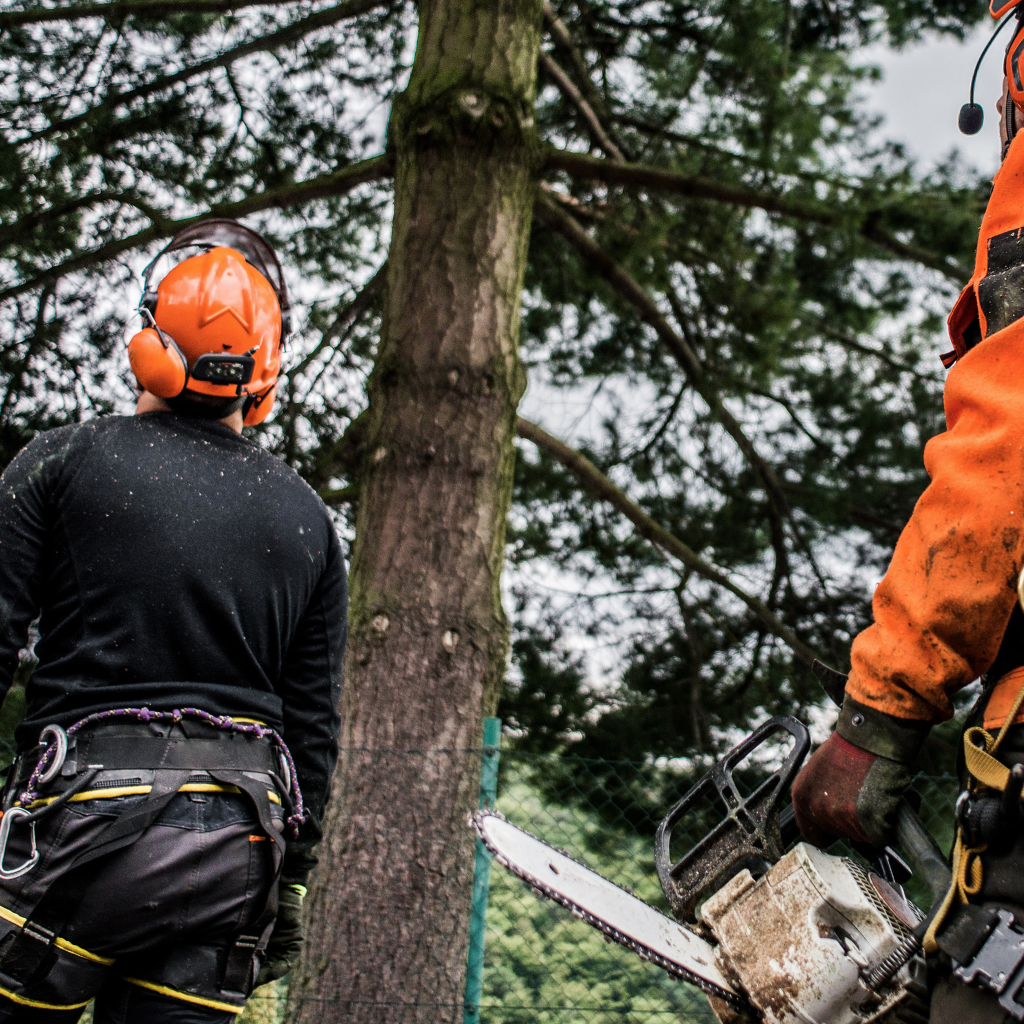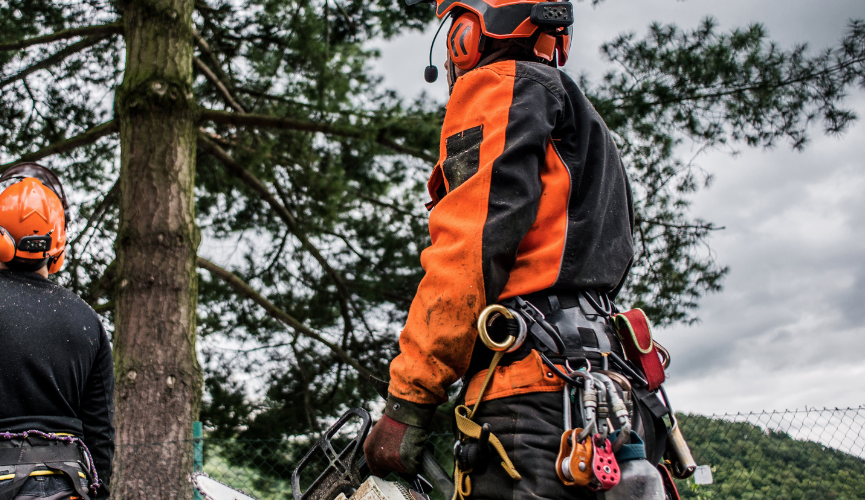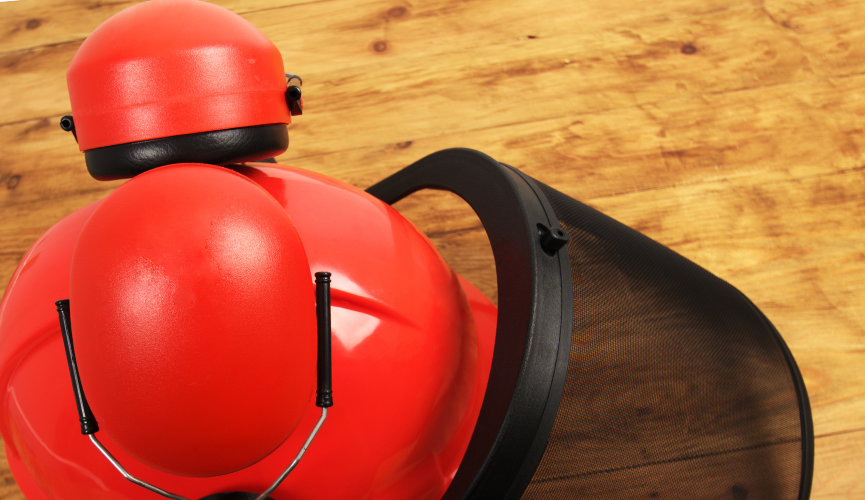How Many Decibels Is A Chainsaw

Key Takeaways
- Chainsaws typically produce between 100 and 120 decibels of noise.
- Prolonged exposure to high decibel levels can cause permanent hearing damage.
- To protect your hearing while using a chainsaw, wear appropriate hearing protection and take regular breaks to minimize your exposure to loud noise.
If you're planning on using a chainsaw, one important question to consider is how many decibels it produces. Decibels are a unit of measurement for sound, and chainsaws are notorious for being loud. Understanding the how many decibels is a chainsaw can help you take the necessary precautions to protect your hearing and stay safe while using the tool.
When it comes to measuring sound, decibels are used to quantify the intensity of a sound wave. The human ear is capable of hearing a wide range of decibel levels, but prolonged exposure to high decibel levels can cause permanent hearing damage.
Chainsaws are particularly loud, with most models the average noise level is between 100 and 120 decibels. This is well above the 85 decibels at which hearing damage can occur with prolonged exposure.
Knowing the decibel level of your chainsaw is important for taking the necessary safety precautions. This includes wearing appropriate hearing protection, such as earplugs or earmuffs, to reduce your exposure to loud noise.
It's also important to take regular breaks to give your ears a rest and minimize your overall exposure to chainsaw noise. By understanding the decibel level of your chainsaw and taking the necessary precautions, you can stay safe and protect your hearing while using this powerful tool.
Chainsaw Decibel Levels
When it comes to using a chainsaw, one of the most important factors to consider is the noise level. The sound pressure level of a chainsaw can have a significant impact on both the operator and those around them. In this section, we will explore the decibel range of both electric and gas-powered chainsaws.
The type of wood you are cutting can also affect the noise level of the chainsaw. Harder woods such as oak or hickory may require more power and produce more noise than softer woods like pine or cedar. Additionally, working in enclosed spaces can increase the noise level and should be avoided if possible.
Electric Chainsaw Decibel Range
Electric chainsaws are generally quieter than gas-powered ones. The noise level of an electric chainsaw can range from 70 to 100 decibels (dB). This is roughly equivalent to the noise level of a vacuum cleaner or a busy street. However, it is important to note that the noise level can vary depending on the specific model and brand of the chainsaw.
Gas-Powered Chainsaw Decibel Range
Gas-powered chainsaws tend to be louder than electric ones. The noise level of a gas-powered chainsaw can range from 100 to 120 dB. This is equivalent to the noise level of a loud rock concert or a chainsaw mill. The noise level can also vary depending on the size and power of the chainsaw.
It is important to note that prolonged exposure to noise levels above 85 dB can cause hearing damage. Therefore, it is recommended to wear hearing protection when operating a chainsaw, especially a gas-powered one.
Overall, the noise level of a chainsaw is an important factor to consider when choosing a chainsaw for your needs. It is recommended to opt for a chainsaw with a noise level that is appropriate for your environment and to always wear hearing protection when operating a chainsaw.

Hearing Protection and Safety When Using A Chainsaw
Chainsaws produce high levels of noise, which can cause permanent hearing damage if proper precautions are not taken. Therefore, it is important to wear hearing protection when operating a chainsaw.
In this section, we will discuss the different types of hearing protection and the Noise Reduction Rating (NRR) system. You need a little bit more than ear muffs.
Types of Hearing Protection
There are two main types of hearing protection: earplugs and earmuffs. Earplugs are small inserts that fit into the ear canal, while earmuffs are worn over the ears. Both types of hearing protection can be effective, but the choice between them depends on personal preference and the noise level of the chainsaw.
Foam earplugs are the most common type of earplugs and are inexpensive and disposable. They are easy to use and can provide a good level of noise reduction. Earmuffs, on the other hand, are more expensive but can provide a higher level of noise reduction. They are also more comfortable to wear for extended periods of time.
Noise Reduction Rating (NRR)
The Noise Reduction Rating (NRR) is a system that measures the effectiveness of hearing protection. The higher the NRR, the more effective the hearing protection is at reducing noise levels. The NRR is expressed in decibels (dB) and is typically listed on the packaging of earplugs and earmuffs.
When choosing hearing protection, it is important to select a product with a high NRR that is appropriate for the noise level of the chainsaw. For example, if the chainsaw produces noise at 100 dB, hearing protection with an NRR of 25 dB would reduce the noise level to 75 dB.
In conclusion, wearing hearing protection when operating a chainsaw is essential to prevent hearing loss.
Earplugs and earmuffs are both effective types of hearing protection, and the NRR system can help you choose the right product for your needs. Remember to always wear hearing protection when operating a chainsaw to protect your ears from damage.
Comparing Chainsaw Noise to Other Sounds
When it comes to noise levels, chainsaws rank among the loudest of household and occupational noises. To put things into perspective, it's helpful to compare the noise level of a chainsaw to other common sounds. Chainsaw decibel levels are higher than most things you use in everyday life.
Household and Occupational Noises
In terms of household noises, a normal conversation typically ranges between 60-65 decibels (dB), while a whisper is around 20-30 dB. A vacuum cleaner can produce around 70-80 dB, while a drill can range from 70-100 dB depending on the type and size.
When it comes to occupational noises, a factory can produce around 90-100 dB, while a construction site can range from 80-110 dB depending on the equipment being used. A reciprocating saw can produce around 100-110 dB, which is comparable to the noise level of a chainsaw.
Recreational and Environmental Noises
In terms of recreational and environmental noises, a concert can range from 90-120 dB depending on the venue and type of music. A jet engine produces around 140 dB, which is considered a very loud noise. A motorcycle can range from 80-110 dB depending on the type and speed.
Leaf blowers are a common source of noise pollution and can produce around 90-100 dB, which is comparable to the noise level of a chainsaw. It's important to note that prolonged exposure to noise levels above 85 dB can cause hearing damage over time.
Overall, it's clear that chainsaws are among the louder household and occupational noises, and can even rival some recreational and environmental noises in terms of noise level. It's important to take precautions such as wearing ear protection when operating a chainsaw to avoid hearing damage.
Regulations And Recommendations

Occupational Safety Standards
When it comes to occupational safety, there are regulations in place to ensure that workers are not exposed to excessive noise levels. The Occupational Safety and Health Administration (OSHA) has set a permissible exposure limit (PEL) of 90 decibels (dB) for an 8-hour workday. This means that workers should not be exposed to noise levels higher than 90 dB for more than 8 hours a day.
For chainsaw operators, OSHA recommends the use of hearing protection devices such as earplugs or earmuffs to reduce the risk of hearing damage. In addition, employers are required to provide training to their workers on the proper use of hearing protection devices and other safety measures.
Noise Reduction Innovations
One of the biggest drawbacks of chainsaws is the noise they produce. The average chainsaw produces between 100 and 120 decibels, which is equivalent to the noise level of a rock concert. This can be harmful to your ears and can cause hearing loss over time.
Human hearing wasn't meant for that kind of abuse. Your hearing nerve will beg for mercy if you hear sounds that loud for prolonged periods of time.
To address this issue, manufacturers have developed noise reduction innovations. One such innovation is the muffler. Mufflers are designed to reduce the noise produced by the chainsaw by redirecting the exhaust gases through a series of chambers. This reduces the noise produced by the chainsaw significantly.
Another innovation is the use of sound-absorbing materials in the design of chainsaws. These materials absorb the sound produced by the chainsaw, reducing the noise level. Some chainsaws even have noise reduction features built into the motor, which reduces the noise produced by the chainsaw without affecting its performance.
In conclusion, advancements in chainsaw technology have led to the development of more efficient, powerful, and quieter chainsaws. Electric and battery-powered chainsaws are becoming increasingly popular due to their ease of use and environmental friendliness.
Noise reduction innovations, such as mufflers and sound-absorbing materials, have significantly reduced the noise produced by chainsaws, making them safer for use.
Final Say On Chainsaw Decibels
In conclusion, chainsaws are notoriously loud, with most models producing sound levels between 100 and 120 decibels. This is well above the safe limit of 85 decibels for prolonged exposure, which means that using a chainsaw without proper hearing protection can lead to permanent hearing damage.
It is important to note that even with hearing protection, exposure to loud noise can still have negative effects on your hearing. It is recommended to limit exposure to loud noise whenever possible and to take breaks to give your ears a rest.
When using a chainsaw, it is crucial to wear proper hearing protection such as earplugs or earmuffs. It is also important to follow all safety guidelines and to use the chainsaw in a well-ventilated area to minimize the risk of carbon monoxide poisoning.
Overall, while chainsaws are a useful tool for many tasks, they should be used with caution and with proper safety measures in place to protect both your ears and your overall health.

Carl Anderson
Carl Anderson is an avid outdoorsman with a keen interest in writing about and reviewing tools. He has over 20 years of writing experience and the only time he isn't feverishly typing away at his computer is when he's outside in nature working on his projects. You can learn more about him here.
Join our community!
Join to receive guides, insights, and the latest gardening deals!
